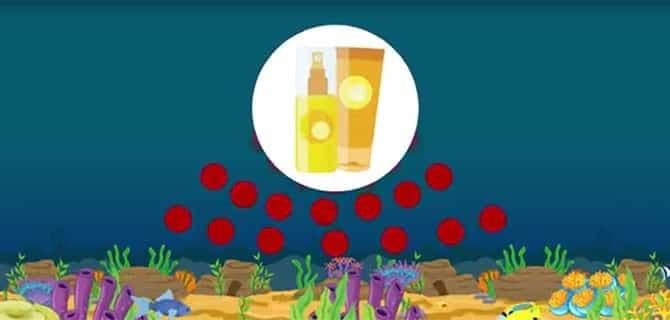Emerging evidence suggests that a certain important component in many sunblock lotions can be deadly to coral reefs. Now, researchers have developed a biodegradable bead that can soak up the sunblock ingredient, oxybenzone, like a thirsty sea sponge. They hope to use the agent to clean up seawater at beaches. The beads’ matrix consists of […]

Emerging evidence suggests that a certain important component in many sunblock lotions can be deadly to coral reefs. Now, researchers have developed a biodegradable bead that can soak up the sunblock ingredient, oxybenzone, like a thirsty sea sponge. They hope to use the agent to clean up seawater at beaches.
The beads’ matrix consists of materials that are familiar to the ocean: alginate, which is derived from algae, and chitosan, which is a waste product of fish. Inside this gelatinous matrix are the magnetic nanoparticles. The magnetic core of the nanoparticles is made from iron oxide and is coated with sodium oleate. By controlling the alginate/chitosan ratio, researchers can make these magnetic nanobiocomposites float or sink for added flexibility in the removal of contaminants.
Watch a video explaining this important new discovery for protecting coral reefs:
Dr. Felix R. Roman and Victor Fernandez-Alos, both of the University of Puerto Rico, Mayaguez,recently presented their work at the 254th ACS National Meeting in Washington, D.C.

